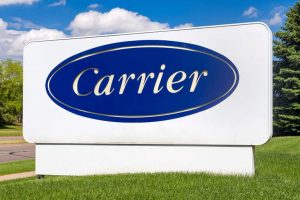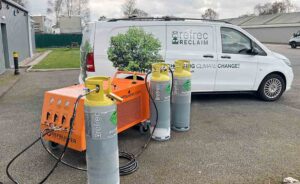Japan quake released 6,600t of halocarbons
27th March 2015 USA: Damage caused by the Japanese earthquake in 2011 released thousands of tons of CFCs, HCFCs and HFCs, according to a new study.
USA: Damage caused by the Japanese earthquake in 2011 released thousands of tons of CFCs, HCFCs and HFCs, according to a new study.
New research suggests that the thousands of buildings destroyed and damaged during the Tōhoku earthquake and tsunami released 6,600 tonnes of halocarbons stored in insulation, fridges, air conditioners and other appliances into the atmosphere.
Emissions of these chemicals are said to have increased by 21-91% over typical levels, according to the new study accepted for publication in Geophysical Research Letters, a journal of the American Geophysical Union.
Halocarbons released included now banned ozone depleting CFCs and HCFCs like R22, as well as HFCs and sulfur hexafluoride.
The emissions were said to be equivalent to the discharge of 1,300 tonnes of CFC11 alone — equal to the amount of CFC11 found in 2.9 million refrigerators manufactured before the chemical was banned. Total emissions were also said to be equivalent to the release of 19.2 million tonnes of carbon dioxide – an amount equal to about 10% of Japanese vehicle emissions in 2011.
 Researchers at the National Institute for Environmental Studies in Tsukuba, Japan, decided to investigate halocarbon emissions and their relationship to the earthquake after ground-based air monitoring stations in Japan recorded surprising high levels of these chemicals.
Researchers at the National Institute for Environmental Studies in Tsukuba, Japan, decided to investigate halocarbon emissions and their relationship to the earthquake after ground-based air monitoring stations in Japan recorded surprising high levels of these chemicals.
The study’s authors combined these measurements with an atmospheric model and other mathematical methods to figure out that increased emissions from the earthquake were involved, how much of the emissions could be attributed to the disaster and how they compared to previous years.
They found that emissions of all six halocarbons were higher from March 2011 to February 2012, following the earthquake, than they were during the same time the year before the event and during the same period the year after it.
About 50% of the halocarbon emissions after the earthquake were of HCFC22, 38% higher than the years before and after the earthquake. Emissions of CFC11 were 72% higher than emissions before and after the earthquake, most likely from insulation foams used in appliances and buildings. Emissions of HFC134a and HFC32 — rose by 49% and 63% compared to the years before and after the disaster.







